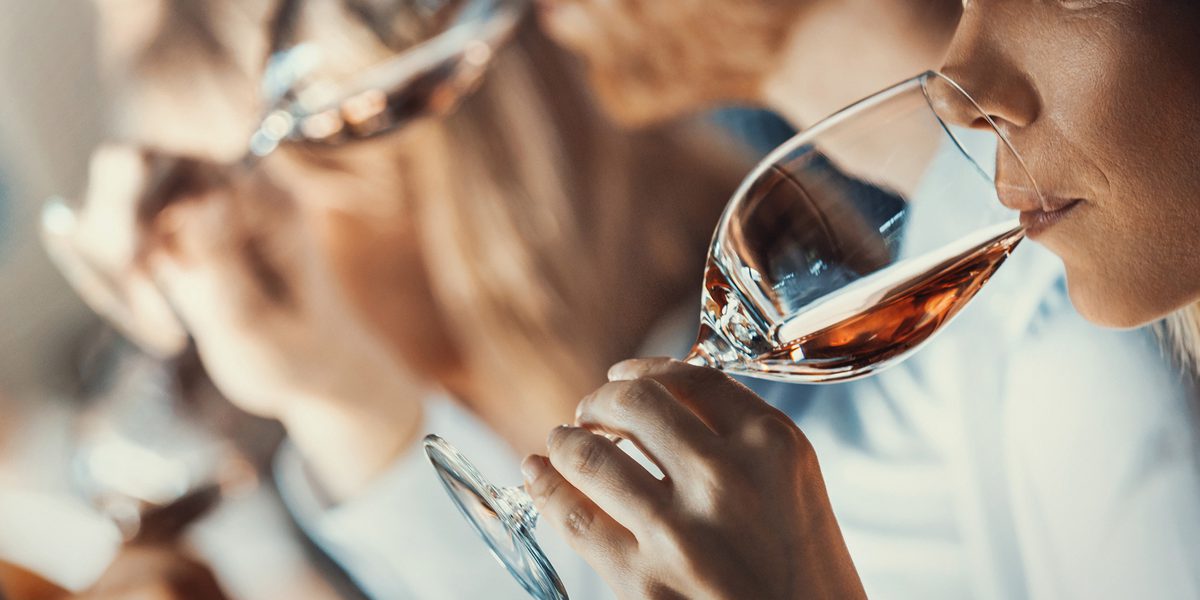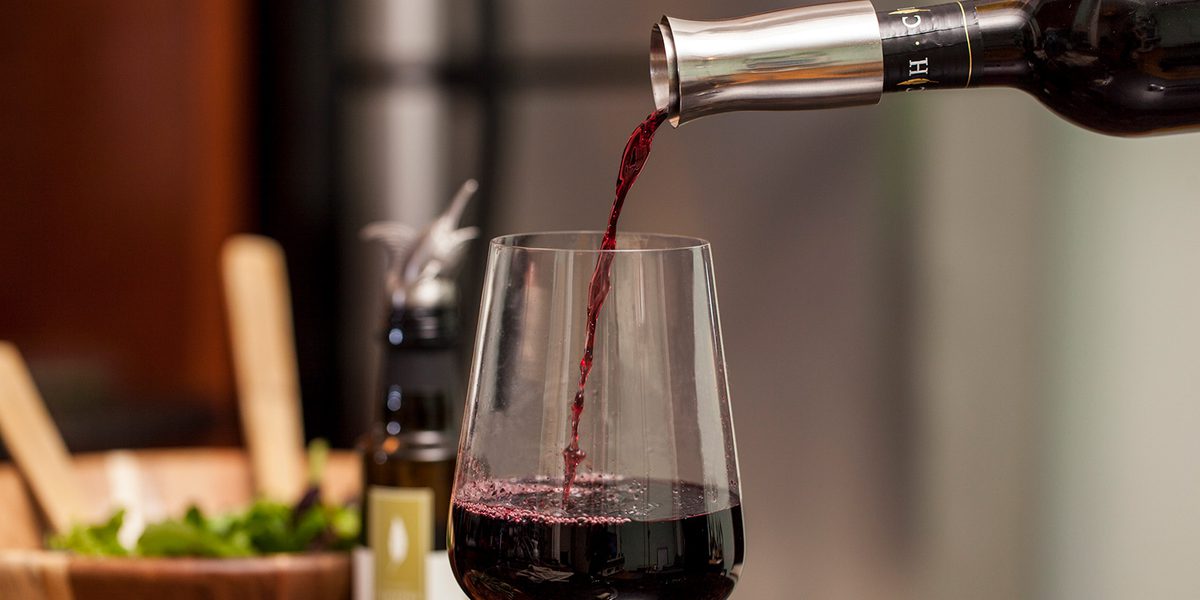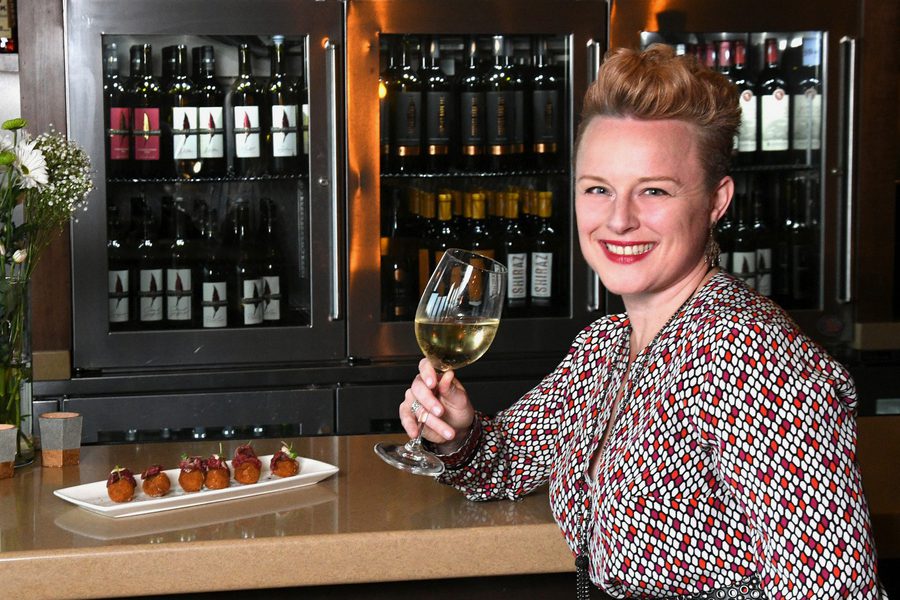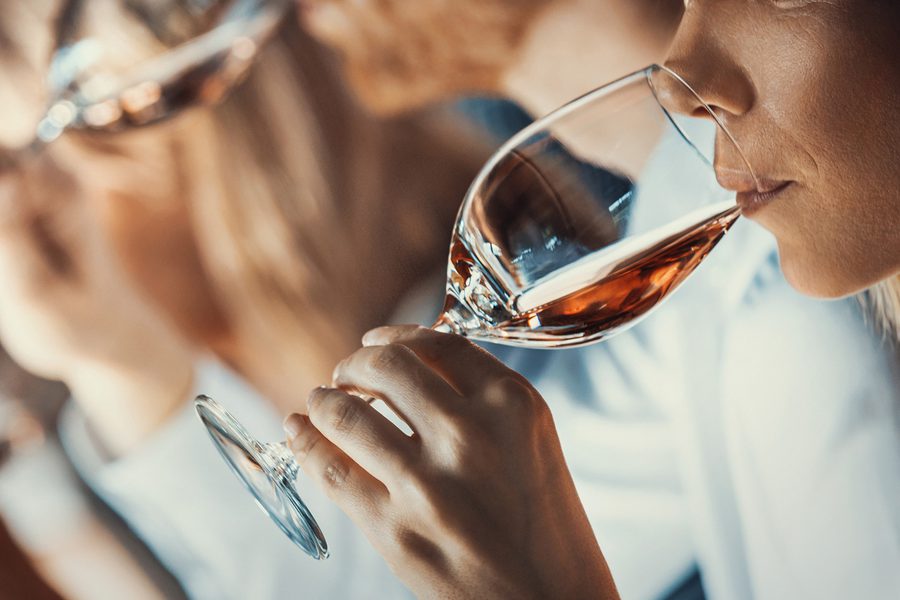Tips from our Tasting Room

Wine Club Members with a 2- or 3-bottle Membership enjoy monthly complimentary wine tastings for two people as part of their Wine Club benefits!
Not a Member? Learn more and join before your visit!
Below are guidelines for pouring wine in a suitable order:
- Dry sparkling wines first, then white, blush, red, and lastly, sweet dessert wines. (Note: Sparkling wines may also be poured as palate cleansers in between wines or at the end of a tasting, if they are sweet.)
- Dry to sweet
- Light-bodied to full-bodied
- Delicate to powerful
The goal of placing wines in a particular tasting order is so that the wines flow from one to another seamlessly. However, proper tasting order can be something of a challenge because wines so often transverse two competing categories.
For example, should a light-bodied, slightly sweet Riesling go before a full-bodied, dry, oak-aged Chardonnay? These two wines pose quite a conundrum, as the Riesling would naturally go before Chardonnay as a lighter-bodied wine, but the Chardonnay could easily go before the Riesing based on it being drier. In this case, it is best to use the "delicate to powerful" guideline. The weight of the Chardonnay, in addition to the oak barrel influence, is likely to overcome the flavors and weight of a typical off-dry Riesling. Ultimately, one perfect tasting order cannot exist for everyone, as our palates are all different; nevertheless, these guidelines will help you provide the best tasting experience over all.

The main enemies of wine are heat and light. Keeping wine in a cool, dark place will do a great deal to protect it. If you have a cellar or wine fridge, 55°F is an ideal storage temperature. Bottles should be kept lying on their sides to prevent the cork from drying out, thus compromising the wine. Lastly, try not to move bottles too frequently as this will disturb the sediment in the wine (if any) and can also create a state of “bottle shock.” When it comes to preserving an open bottle of wine, there are several options to choose from:
- Pour the leftover wine into a smaller wine bottle to decrease the headspace and, therefore, the amount of harmful oxygen left in contact with the wine.
- Use a specially designed pump and stopper to extract the oxygen from the bottle.
- Use a wine preserve spray to displace the oxygen from the bottle with a heavier, inert gas (usually Argon and/or CO2), then seal with the original cork or another stopper.
- For sparkling wine, use a sparkling wine stopper to retain the bubbles and flavors. These stoppers are designed to hold up under the pressure that builds in sparkling wine bottles—so be careful when removing.
- All wines (yes, even reds) should be stored in the refrigerator until further use, the cold will slow the oxidation process.
| Temperature | Chilling Time | Wine Style | Examples |
|---|---|---|---|
| Below 45°F | 2½ hrs in the refrigerator | Simple, inexpensive light bodied white and sweeter blush/rosé wines | Vinho Verde, low cost Pinot Grigio or similar, White Zinfandel |
| 45°F-50°F | 2 hrs in the refrigerator | White sparkling, light bodied white, dry rosé, and light dessert wines | Champagne, Prosecco, Riesling, Sauvignon Blanc, Fino Sherry, White Port |
| 50°F-55°F | 1½ hrs in the refrigerator | Red sparkling, medium-full bodied white, light bodied reds, medium bodied dessert wines | Sparkling Shiraz, Chardonnay, Viognier, Beaujolais, Dolcetto, Sauternes |
| 55°F-60°F | 1 hr in the refrigerator | Medium bodied red, fuller bodied dessert, and most port wines | Pinot Noir, Chianti, Rioja, Madiera |
| 60°F-65°F | ½ hr in the refrigerator | Full bodied red wines | Cabernet Sauvignon, Merlot, Shiraz, Zinfandel based wines |

The purpose of aerating is to infuse air into a wine which will bring out the aromas and bouquet and soften the impact of tannins and acids. This is particularly important with young, tannic red wines making them more enjoyable to drink soon after opening. Decanting serves a similar purpose, but with the added benefit of removing sediment from young unfined and unfiltered red wines or aged red wines that have thrown sediment. Though most white wines do not need aeration or decanting, fuller bodied whites, especially those that have been oak aged (i.e., good quality Chardonnay), will benefit from a short period of aeration.
Exploring the World
One Glass at a Time
Our wine trips take Wine Club Members to celebrated locations around the world for unique and unforgettable guided experiences.
Join Us



